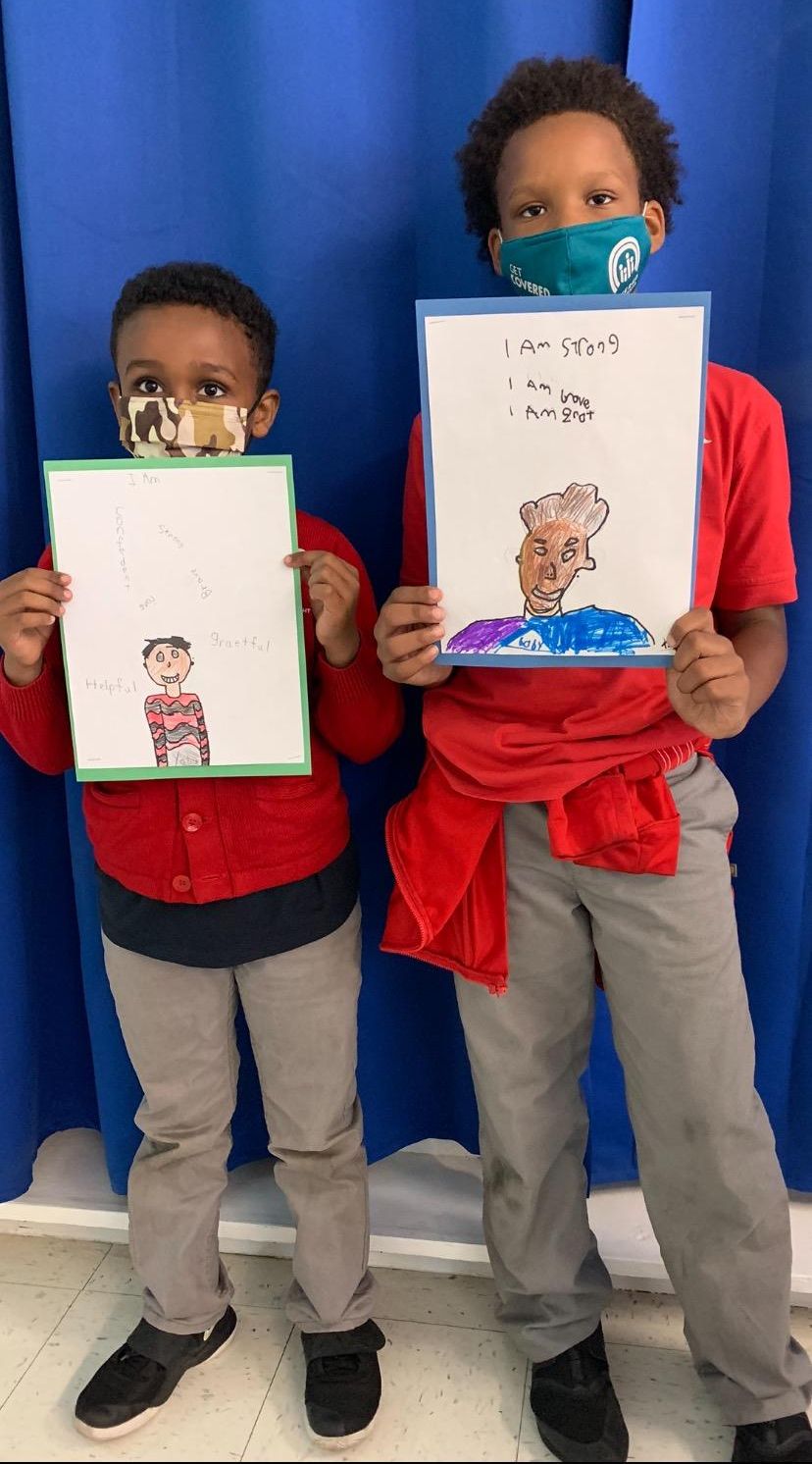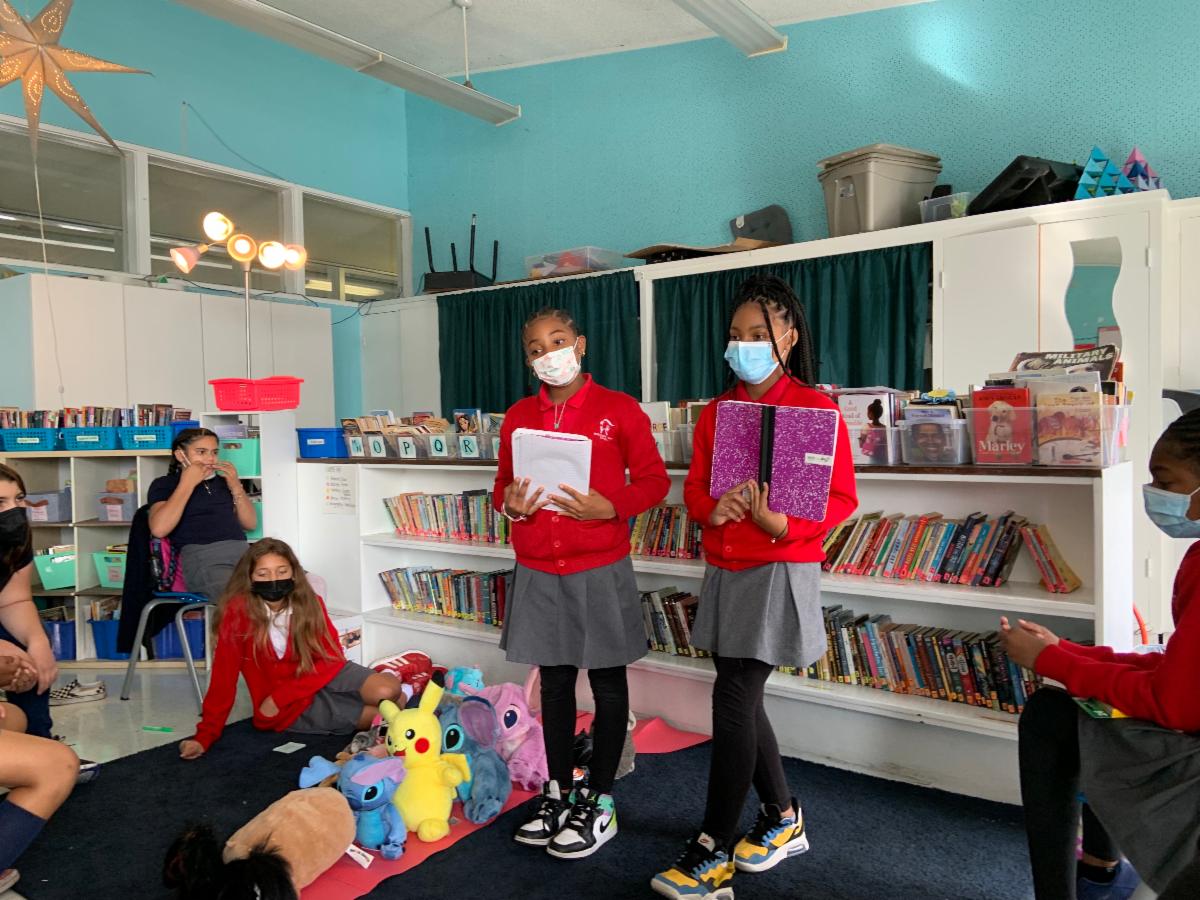|
Eighth grade and Eighth Grade Honors ELA is learning about undocumented Latinx immigrants, Dreamer children, and family reunification in Ernesto Cisneros’ Efren, Divided. Before diving headfirst into the story, they learned about anti-Latinx bigotry that swelled in the United States of America from 2016-2020 from a Washington Post article that chronicled the racism of Latinx people dating back to the colonization of the Americas and Thomas Jefferson’s presidency to more recent political offices. In small groups, they were challenged to answer the question, “How can anti-Latinx bigotry and racism be challenged and eradicated?” Their brainstorming resulted in short essay responses of their ideas, which ranged from policy change, to education, to justice reformation. A few students shared their suggestions for solidarity and supporting real, positive change for the Latinx community:
I would challenge Latinx bigotry and racism by encouraging Latinx people to run for the office of president. When Barack Obama ran for president, people were very skeptical of a black man holding that office. But later on, those same people changed their perspective on Obama and voted for him to be president again for another four years at the end of his first term. A Latinx president would be smart and know how to make great decisions about immigration, equal rights, and labor. In the meantime, more Latinx people should be mayors, U.S counsel people, judges, cabinet members, and other important government officials. After all, “United States” means everyone is united and has equal freedom.
-Franklin
My personal favorite solution is to have more Latinx history taught in schools. This is a very simple, yet unused solution for the problem of Anti-Latinx Bigotry. By having more Latinx textbooks, novels, and stories in schools, the next generation will develop a sense of gratitude for everything that Latinx people have done and continue to do for this country, as well as their experiences and what they have gone through. If we can raise up the next generation to be unbiased and anti-racist towards the Latinx community, then we can eradicate Latinx bigotry for sure. And, if we start implementing all three of these things right now, then this can be done before the next generation has to even think about it.
-Ivan
We should relate the experiences and issues of the Latinx community to the average American. By challenging people to think about themselves in the other person's shoes (in this case Latinx people), I think that there would be more of an understanding between everyone. Latinx people have endured so much. It’s time to end the idea that Latinx people are “wanted for their sweat, their military service, their taxes, but not for their children or their company.” Latinx people deserve the freedoms to which every other American is entitled. And, for their sacrifices and contributions to the workforce and society, they deserve gratitude and recognition. They, of all people, have earned it.
-Kaya
One of the ways to eradicate Latinx racism is through policy change and new laws that protect Latinx people in greater ways. More specifically, laws can be passed in Congress to strengthen equal rights for the Latinx community, immigrants, and the children of immigrants. By passing better laws, people will start to believe that Latinx people are just as deserving of protection. Then, the historical stereotypes perpetuated by false information, hatred and racism will be challenged and hopefully, disappear.
-Rediet
|












 year-long entrepreneurship focused STEAM project regarding mask technology. Students received positive pressure air filtering masks that have the added benefit of acting as an air conditioner for your face. They are happy about that!
year-long entrepreneurship focused STEAM project regarding mask technology. Students received positive pressure air filtering masks that have the added benefit of acting as an air conditioner for your face. They are happy about that!





































